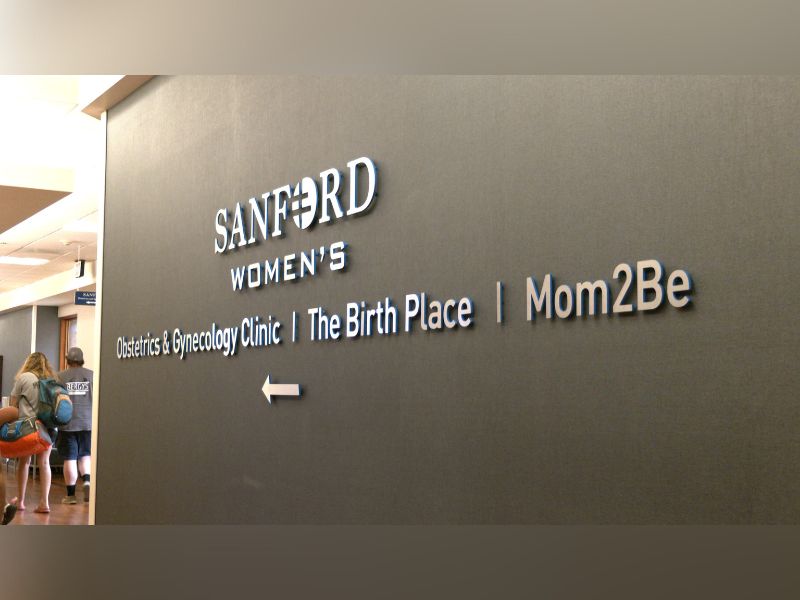More women will get uterine fibroids in their lifetime than those who won’t.
In fact, 70% to 80% of women will get uterine fibroids – benign tumors in the wall of the uterus – in their lifetime, said Erica Schipper, M.D., an OB/GYN at Sanford Health in Sioux Falls, South Dakota.
“Fibroids are very common,” she said. “Most women won’t even know they have fibroids. Most women don’t have any problems from them. Cancer occurring in a fibroid is exceptionally rare. It occurs in about 3 per 100,000 person-years.”
Signs of fibroids
The most common symptom is bleeding between periods, according to Dr. Schipper. Other symptoms include:
- Heavy, long, painful periods
- Pelvic pain or pressure
- Pain with sex
- Low back pain
- Frequent urination
- Firm mass near the middle of the pelvis
Some women with uterine fibroids may experience fertility issues or recurrent miscarriages.
If a patient notices any of these symptoms and thinks they might have fibroids, they should reach out to their OB/GYN or primary care provider.
Fibroids treatment options
Dr. Schipper said when uterine fibroids are discovered, she and other providers listen to a patient’s goals and present options that would fit their lifestyle. Including if a patient does or doesn’t want to have children.
Birth control and medications
“Going from the least invasive to the most invasive options, we’ll often start with birth control pills or a vaginal ring, or progesterone therapy for bleeding symptoms,” she said. “There are also medications that modify the hormones called GnRH agonists or antagonists. They suppress the hormones that feed the fibroids.”
Laparoscopic procedures
“Then, we get into more procedural interventions. There’s something called a hysteroscopy where we actually go into the uterus with a camera. For smaller fibroids that are inside the uterine cavity, we can actually cut those out that way. It’s particularly helpful for women who want to have a baby,” Dr. Schipper explained. “Additionally, a myomectomy can be performed in which larger fibroids or those that are not within the uterine cavity are removed surgically, preserving the uterus. This can often be done laparoscopically.”
Uterine artery embolization
For women who do not want children, or are done having children, another option is a uterine artery embolization – where a provider goes through the blood vessels to block the blood supply to the fibroid.
“The nice thing about that is it’s a fairly quick recovery,” said Dr. Schipper. “It’s minimally invasive. The drawback is that it’s not as good for either large fibroids or lots of fibroids. And, about 25% of women who choose uterine artery embolization in the long run will likely decide they would rather have a hysterectomy.”
Radiofrequency ablation
Acessa, or radiofrequency ablation, is another option for patients. It’s done when a provider makes minimally invasive incisions in a patient’s belly. Using an ultrasound, they’ll identify each of the fibroids.
From there, they’ll put in a probe containing a radiofrequency needle that heats the fibroids from the inside.
“What that does is it changes the fibroid consistency from a firm baseball to the consistency of a marshmallow. That substantially lowers bleeding and lowers those pressures and pain symptoms. It also decreases the size of the fibroid by about 45%,” said Dr. Schipper.
This approach is not yet FDA approved for women who want to have babies, “although there are studies ongoing, and some women will choose to have it anyway. We think in the future it might be good for women who want to have children,” explained Dr. Schipper.
Who is at risk for fibroids?
Women who are nearing menopause are at the greatest risk for fibroids. This is because of their long exposure to high levels of estrogen.
Women who had their period at a younger age are also more likely to get fibroids. Women who have children later in life, or don’t have children, are a little more likely to have fibroids.
According to Dr. Schipper, women who are under a great deal of chronic stress tend to have more fibroids. There is also a hereditary aspect, she said, meaning if a patient’s mom had fibroids, they are more likely to get them.
There is also an increased risk for women who have high blood pressure.
Are there ways to prevent fibroids?
For the most part, there is little that can be done to stop fibroids from developing, but diet and physical activity can play preventive roles.
Dr. Schipper said women who eat more meat and animal-based products tend to have more fibroids than women who eat more fruits and vegetables.
“Exercise also seems to lower the risk of fibroids,” she said.
You have a say in your care
Dr. Schipper said all the OB/GYNs at Sanford are board certified and highly experienced.
“We see a lot of patients and a lot of fibroids, and we do very individualized therapy. So, we meet our patients one-on-one. We talk very personally about what their goals are.
“We look at their symptoms, their family plans, and then of course their imaging, their ultrasound, and everything. We make a decision with the patient as to what the right options are for them.”
Learn more
- What to know about an ectopic (tubal) pregnancy
- New tech targets tumors in less time
- Choosing the right period product for you
…
Posted In Menopause Care, Sioux Falls, Women's

